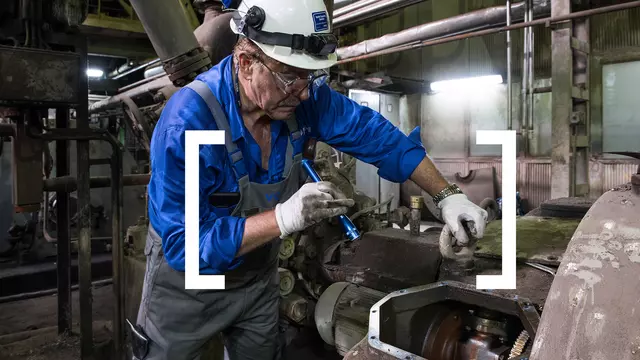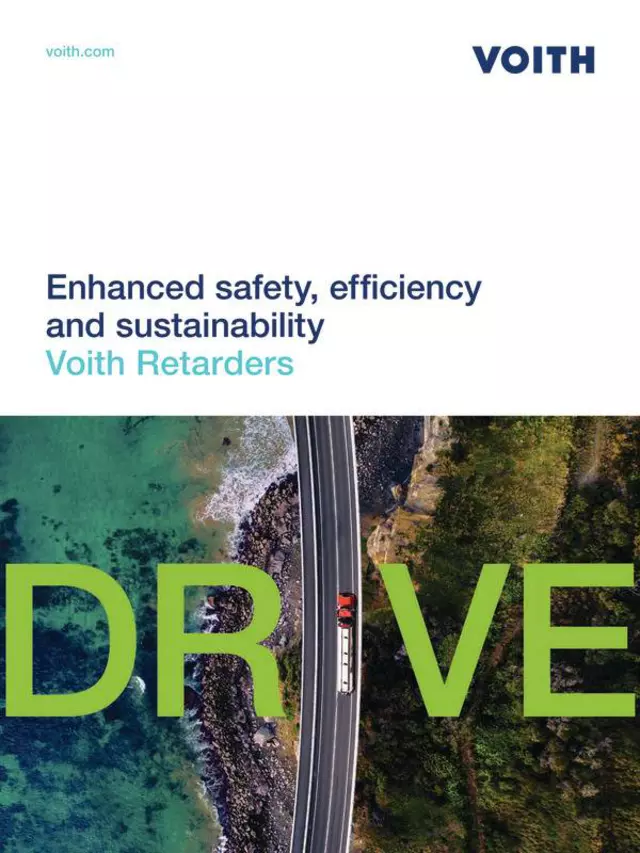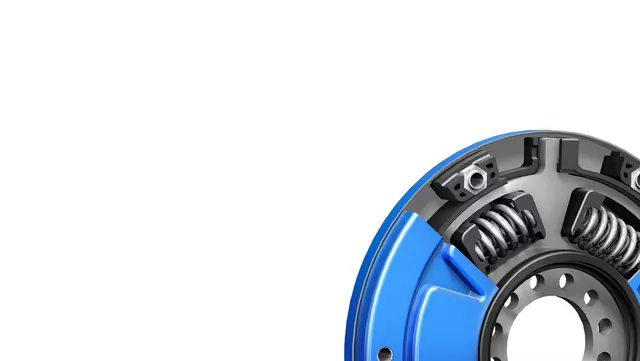Better braking – with Voith retarders for commercial vehicles
With Voith retarders, up to 90 percent of all braking actions can be performed without wear. This represents a significant increase in safety. Retarders protect the service brakes, thus reducing expenditures on spare parts and maintenance. At the same time, transport capabilities increase due to higher average speeds.
High brake performance is essential when it comes to stopping a truck that weighs several tons. Classic friction brakes can reach temperatures of up to 1000 degrees under demanding conditions such as adaptive braking on the highway or on long downslopes. This leads to a rapid reduction in braking efficiency. Voith retarders provide the solution: The permanent hydrodynamic endurance brake system ensures reliable, wear-free braking. This protects the service brakes and ensures they are always available. It is no surprise that endurance brakes in buses and trucks are a legal requirement throughout Europe.
Voith retarders – the advantages at a glance
- Greater safety throughout the entire speed range ensured by high retarder brake performance and cold service brakes
- Downhill cruise control – using the v-constant function, the retarder maintains constant driving speed on downward slopes
- Lower operating costs – considerably longer periods without the use of service brakes results in fewer visits to the repair shop and lower maintenance costs
- Low weight – Voith retarders are light, allowing optimal use of load limits
- Higher transport capabilities – due to higher and more uniform average speeds
- Lower consumption – more uniform speeds and proactive driving behavior saves fuel
- Non-polluting – up to 80% lower emissions of brake dust
Voith retarder operating principles
Hydrodynamic braking – retarder design and operation
- Hydrodynamics makes wear-free braking possible.
- The magnitude of the braking torque depends on fill level and speed.
- The retarder is perfectly integrated into the vehicle braking management system.
- The braking energy is converted into heat and dissipated via the vehicle cooling system.

The design of the MRCU convinces by great robustness. It easily withstands environmental influences in the powertrain and guarantees a high availability at all times. For a simpler handling, a greater functionality, an increased robustness, higher cyber security and improved efficiency.
Download brochure
Transmitting power efficiently – with the Turbo Retarder Clutch VIAB


Wear-free start-up and braking
The heavier the truck and the rougher the terrain, the greater the load on the clutch and brakes. The solution: Using the VIAB wear-free integrated acceleration and braking system, even heavy-duty trucks can start up powerfully, maneuver accurately within millimeters, and brake safely – repeatedly and without wear. This results in considerably longer periods when the friction clutch and service brakes are not in use, ensuring greater safety and riding comfort. Wear-free start-up and braking - two in one.
The Turbo Retarder Clutch VIAB – the advantages at a glance
- A high level of comfort due to sensitive hydrodynamic start-up and maneuvering – even with a high total weight
- Maximum tractive power across the entire speed range
- Full engine torque at low speeds up to the traction limit
- Stable temperature even under high load conditions compared to conventional torque converters
- The integrated high-performance primary retarder allows maximum brake performance even at low driving speeds
- Retarder function even in reverse gear

VIAB

The stator transported for us on a heavy-duty truck across Germany from our plant in Heidenheim to the hydropower station in Töging am Inn was a gigantic 8.2 meters wide and weighed 105 metric tons. Thanks to the Turbo Retarder Clutch VIAB, the driver from haulage firm TSB was able to start up powerfully, maneuver with millimeter precision and brake safely at all times.

Power, strength and durability are attributes that immediately spring to mind to describe trucks that have to carry heavy loads of sand, gravel or timber. But sometimes the big muscles among the commercial vehicles are about something entirely different – a sensitivity that makes every inch count. Maneuvering in sand pits or on slippery dirt roads often requires sheer strength, but also highest precision.
Do you have any questions about Voith retarders or the Turbo Retarder Clutch VIAB?
We’re here to help!
Further information about Voith retarders
Our Service - Part of Your Business Where your truck is in good hands

- Everything from a single source: development, design, production – and service!
- Decades of product experience as an original equipment manufacturer and service provider
- Fast and smooth cooperation and best service thanks to a worldwide network of service locations
- Long-term partnership and planning security are guaranteed due to longstanding corporate stability
Judge us by our performance
- Onboard troubleshooting and upgrade
- Replacement and repair
- Repair of supplied retarders (all model series)
- Troubleshooting and functional testing of individual components
- Worldwide delivery of Voith original spare parts, as well as
- replacements and basic retarders













